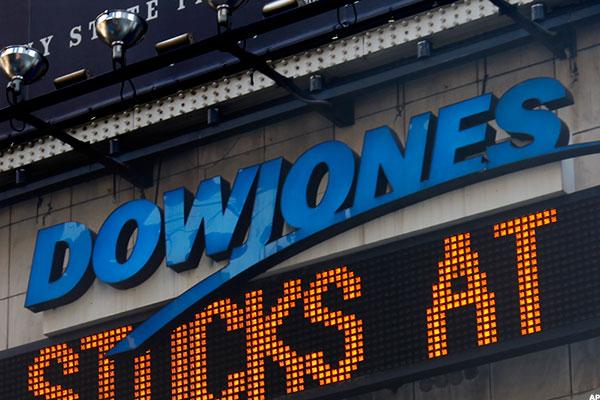Start trading today with our #1 recommended broker, CLICK HERE
So having looked at some of the issues we have to face as futures traders, let’s now take a closer look at the dow jones futures market, and in particular at what a futures contract looks like on paper, how it works, and what are the various contract types that are available for us to trade. The exchange that I will be using for all these examples is the Chicago Mercantile Exchange, the largest futures exchange in the world, and as such they offer three dow jones futures contracts as follows :
- e mini dow jones futures – these trade at $5 per index point
- dow jones futures ( DJIA ) – these trade at $10 per index point
- big dow jones futures ( DJIA ) – these trade at $25 per index point
Example of a dow jones futures contract
Now the next thing we need to do, is to look at the contract specification for one of these contracts in detail, which will explain how the contract works in principle, what the obligations are under the terms of the contract, and when the contract expires. So as an example, let’s take the most widely traded of these, the dow jones futures contract and in order to explain the various terms of the contract I have attached a copy of the contract alongside, so let’s start by looking at each of the various elements in turn.
So, starting at the top, the first thing this that the contract tells us is that this is a futures contract and not an options contract – the two are very different. Below this, we have the name of the contract which is the Dow Jones ($10) Futures contract, and we then move below this line to the grey columns which are the most important, and the first of these which is the opening date, which shows the date the contract was first introduced to the dow jones market by the exchange.
Moving to the next line we have the ticker symbol, and as you can see there are two symbols, one for open outcry and one for electronic trading. For those of you who have been to a commodities trading exchange and seen the floor trading in action, it is well worth a visit, and this is where trading is conducted in a ‘trading pit’ with floor traders in brightly coloured jackets, buying and selling futures contracts using hand signals and gestures. To us of course, this all looks chaotic and disorganised, but to the floor traders it represents the ideal way to trade as it allows you to look your counter party in the eye, and many traders still rue the day when electronic trading became the norm. However, futures trading is still conducted in this way, and at the CME around 20% of futures volume is still executed through the trading pit using open outcry. As such we therefore need to have two ticker symbols, one for dow futures traded in open outcry, and one for dow futures which are traded electronically on the Globex platform. As you will almost certainly be trading online, then the ticker code you will need to look for is ZD. This will be on your dow jones futures ticker.
Moving on to the next line, we reach the contract size, and what this tells us is that the size of 1 dow jones futures contract is $10 x DJIA, so in other words if the dow jones futures index is trading at 10,000, then the contract size is $100,000. Let me try and put this into perspective for you so that you realise the power of one futures contract – with Alcoa (AA) currently trading at around $10 per share, then this is equivalent to you holding a block of 10,000 stocks in the company, so every 1 cent move in the stock price would equate to a profit or loss of $100. Now if we were trading this stock in a margin account, typically the maximum margin for trading stocks is 50%, so to fund this level of investment we would need to have at least $50,ooo in our online trading account as an absolute minimum. In our futures account however, we will only need somewhere in the region of $13,000 ( initial margin) – a huge difference, and one which magnifies our losses and gains even further as we move from a 2/1 leverage to an 8/1 position. When you first start trading futures, whether dow futures or any other, just remember the value of the underlying contract you are trading, and never fall into the trap of thinking that one futures contract is a small number – it isn’t, and never forget it. Just remember the equivalent stock you are effectively trading, and hopefully this will keep the risks uppermost in your mind.
Now on the next line we have the tick data which tells us the minimum fluctuation for the contract, and in this case of course the minimum is one index point which equates to a $10 move, so if the futures index moves 10 points in 1 minute ( which is does frequently) then we will be up or down $100 in a matter of seconds, which is why risk management is so important. On the following line we have the trading hours, and as you will see, there are two, which is why we have two tickers for the same contract. The open outcry trading pit is only open during the hours when the exchange itself is physically open, whilst the dow futures traded on Globex are virtually 24 hours a day, with a short period at the end of each when futures contracts are ‘marked to the market’. This is the time at which the futures exchange will calculate all the trading positions to ensure that all traders have sufficient margin in their accounts to cover open positions, and if not, then you will receive a margin call, which simply means that you must deposit more funds to cover your positions immediately, otherwise the contracts will be closed out or reduced by your broker to bring your margin and account back into balance and lower your market exposure. I will explain margin trading and how it works in more detail shortly, but for now remember that this is not a game, it is a serious business and if you fail to keep your account in good order with sufficient trading capital and margin to support your positions, then the exchange will take action immediately and instruct your futures broker accordingly.
Next we have the cycle of contracts and which period they cover. Remember a futures contract is just that – you are buying and selling contracts which have a physical expiry date in the future, and just like any any contract, such as an insurance policy, then this too has a date and time on which it expires. In the case of our dow jones futures, these are broken into four simple quarters, with the contracts expiring in March, June, September, and December, on the third Friday of the month. The contract closest to the current month is generally referred to as the ‘near contract’, and it is also important to realise that we can roll a contract over, in other words we do not need to wait until the contract expires, but can simply ‘extend’ the life of our trade by rolling our existing position into the next quarter. Again I will explain this shortly. Finally, the dow jones futures contract tells us that this is a cash settled contract – there is no physical delivery as there is nothing to deliver, so when we close out our position or let the contract expire, then we will be credited or debited with the appropriate cash amount.
So having covered the dow futures contract and the specification underlying the instrument, let me now tidy up all the loose ends of margin, the contract price, and how to open and close positions in dow futures on the next page.
Start trading today with our #1 recommended broker, CLICK HERE













